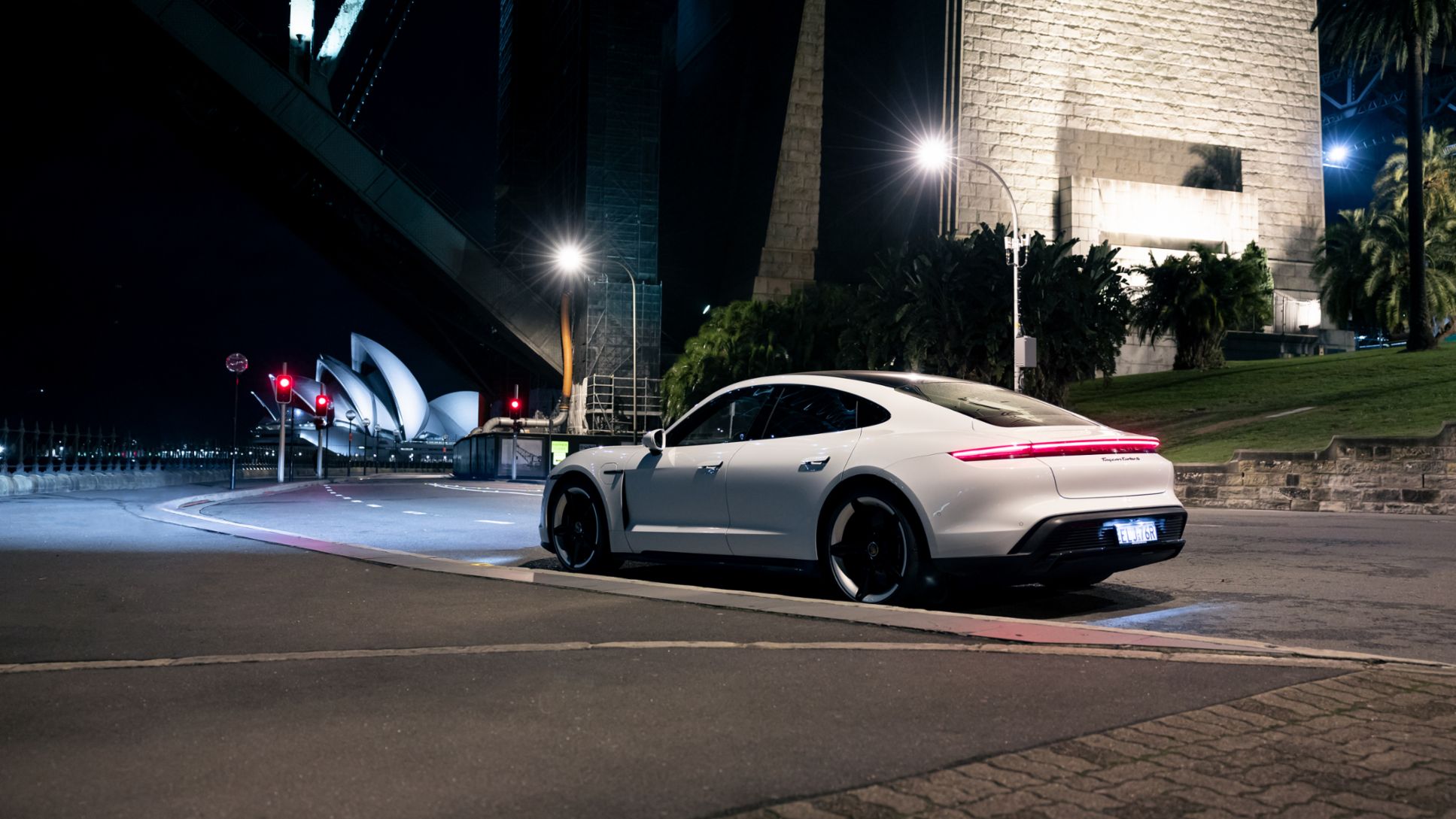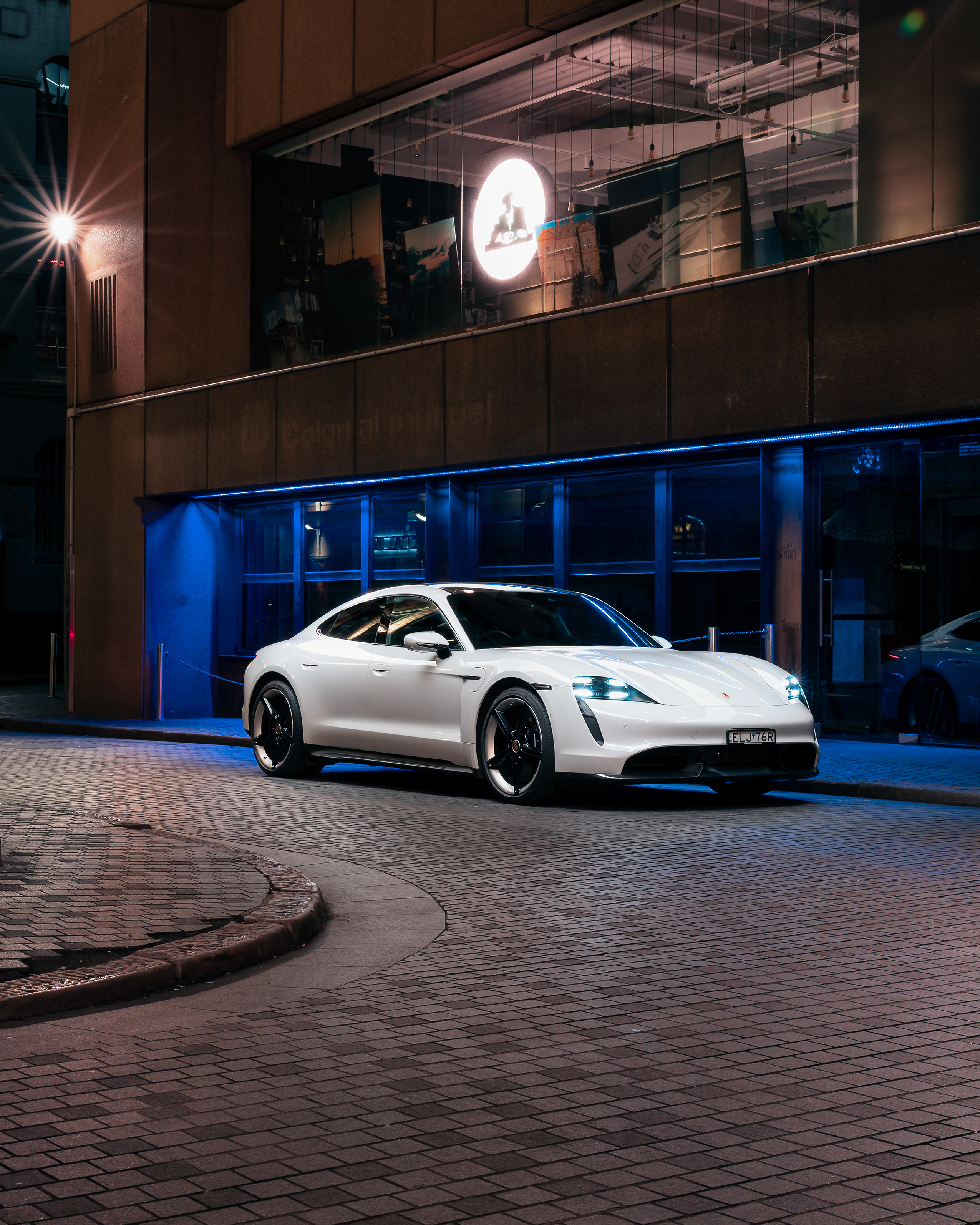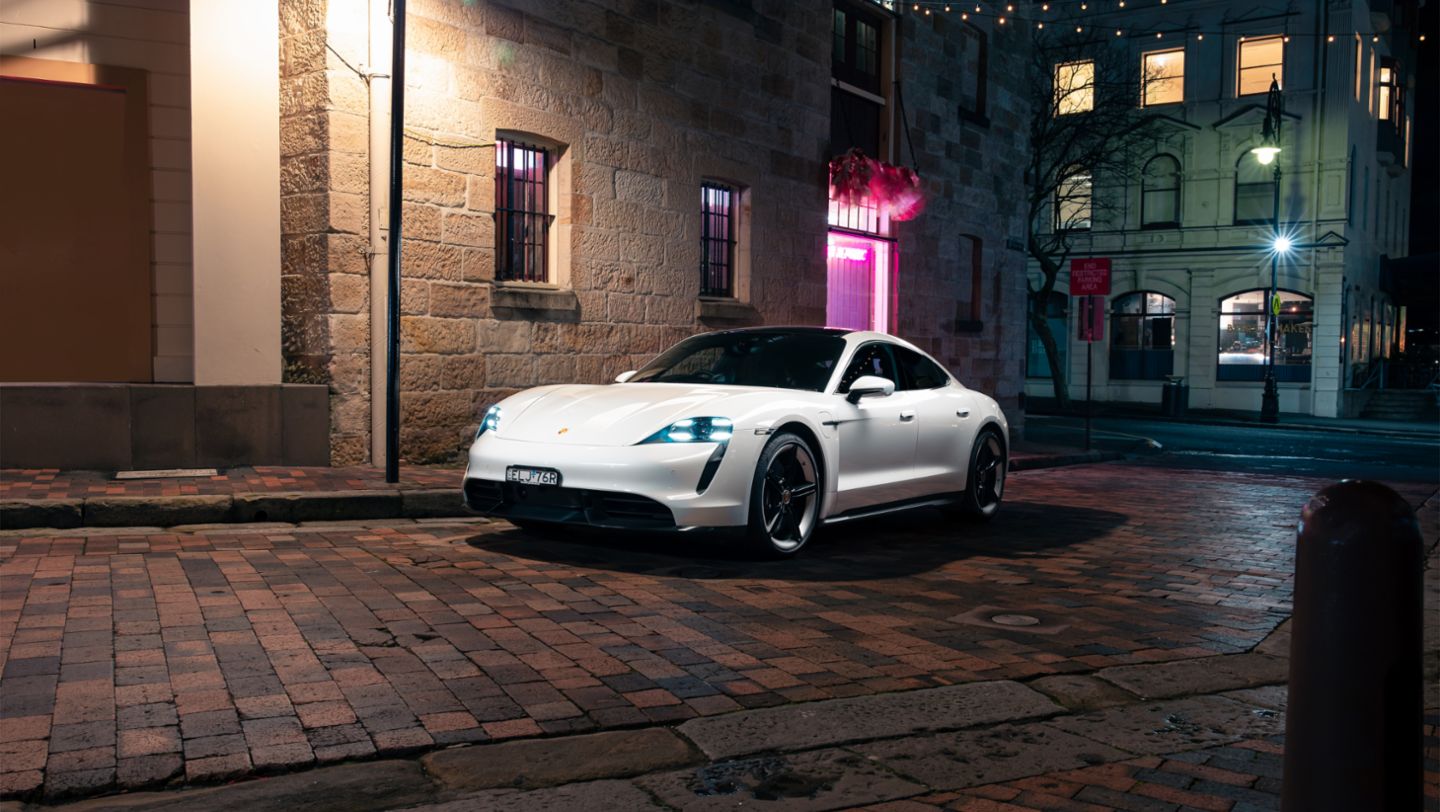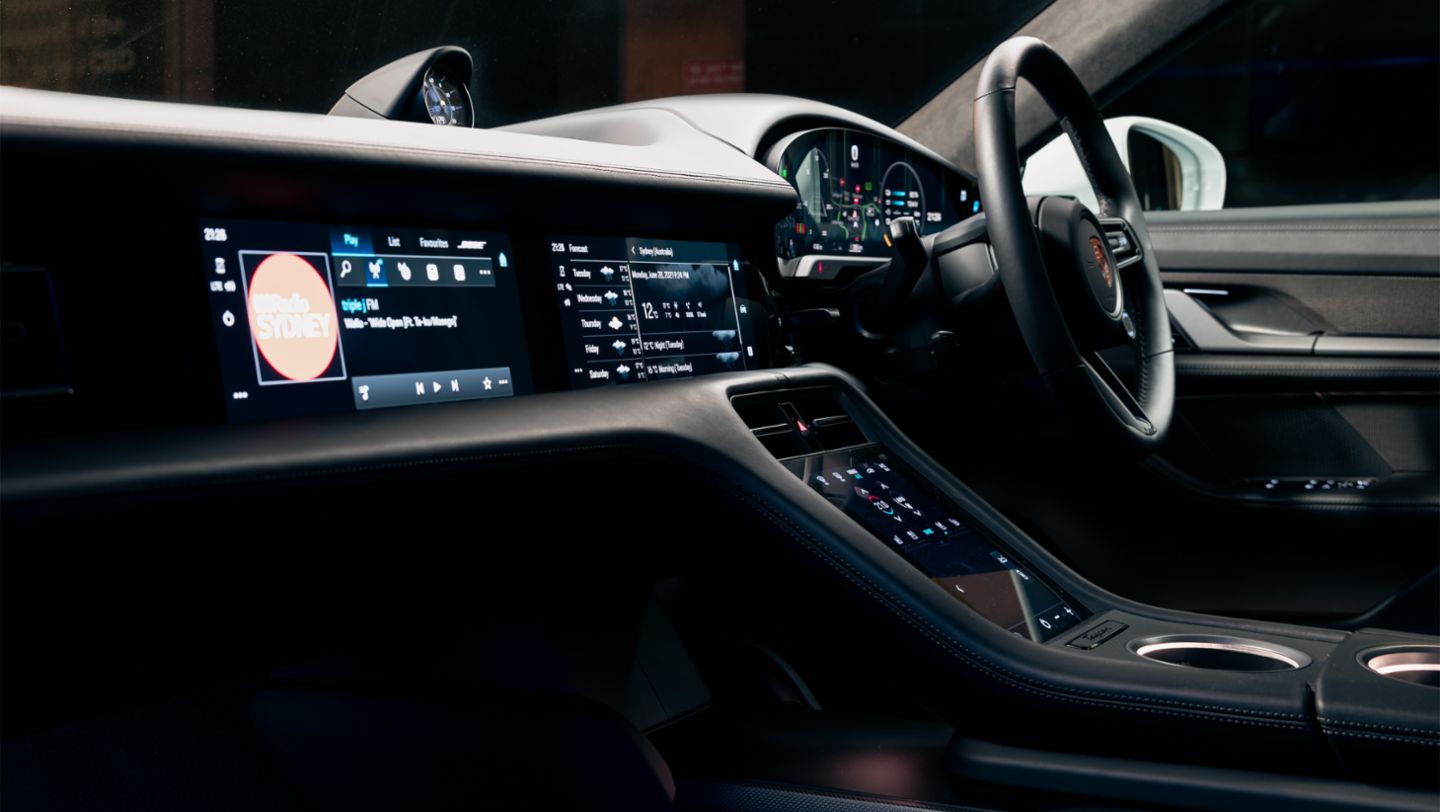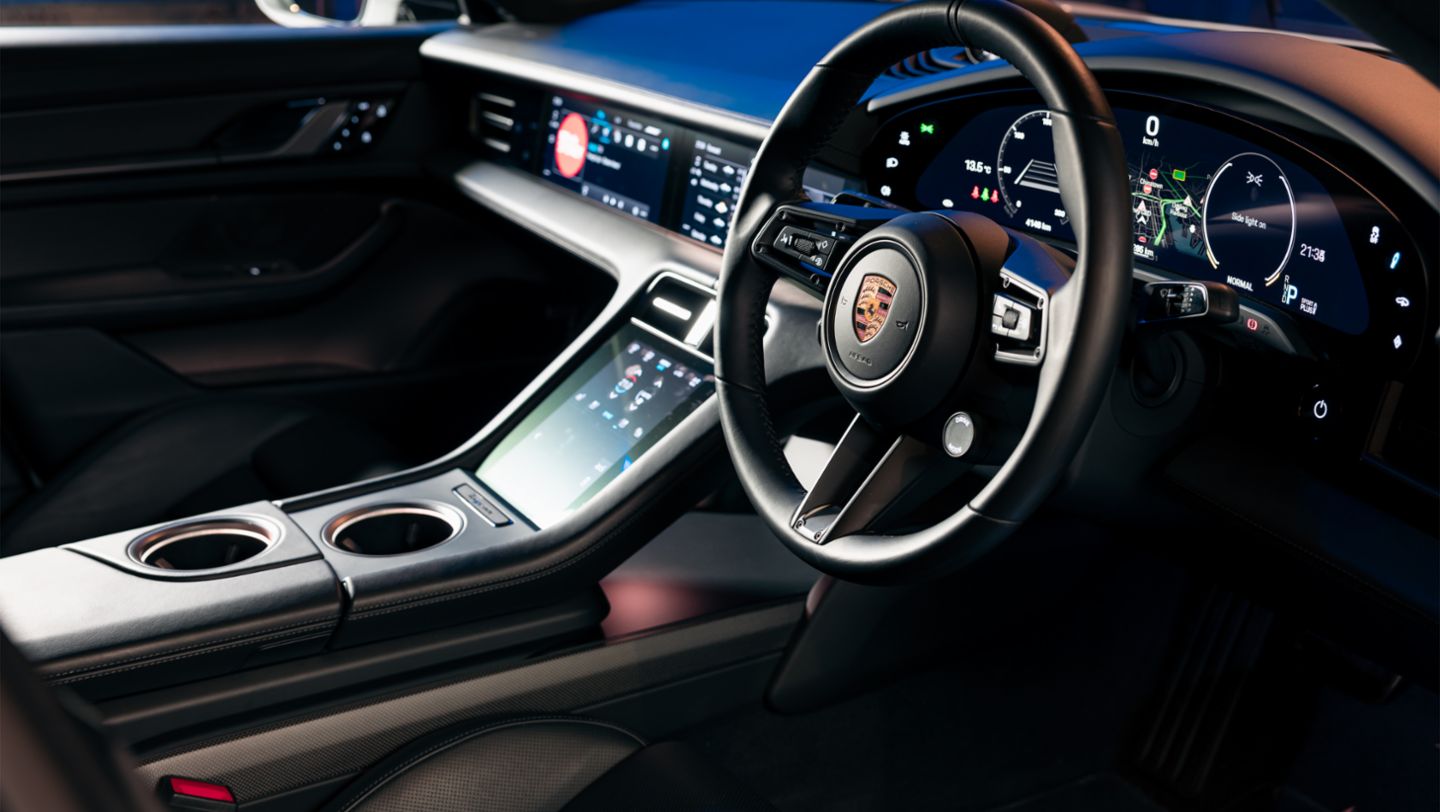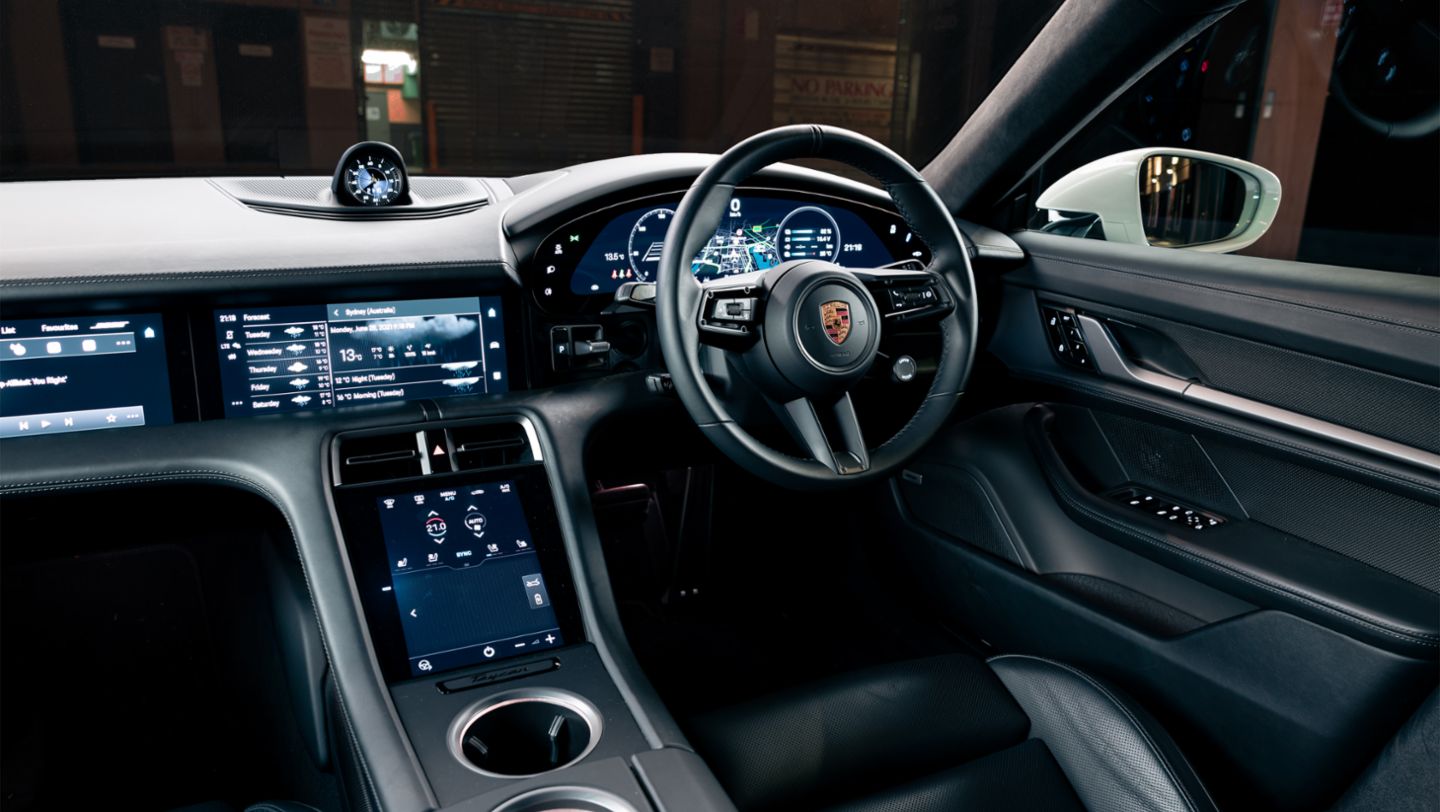The Porsche Taycan is the newest edition to Porsche’s stable of performance cars: a four-door low-slung speedster that sits somewhere between a 911 and Panamera. It’s immediately recognisable thanks to its dramatic ‘floating’ headlights, low stance, and of course, absence of tailpipe. It’s beautiful, sure, but what’s it like to drive? Glad you asked.
Let’s not mince our words here: the Porsche Taycan is an epoch-defining vehicle. The Taycan isn’t just the world’s first true performance EV, but it’s perhaps the most exciting car to ever come out of Germany since the original 911 back in 1964. It’s just that good.
First and foremost, the Taycan is a performance car – you’d expect nothing less from Porsche. Anyone even passingly familiar with cars knows that the performance case for EVs is just as compelling as the environmental one: the effortless acceleration, hefty torque and impressive stopping power EVs are inherently capable of lend themselves well to performance applications. Hence why Porsche were keen to invest in electric drivetrains.
The Taycan range encompasses seven models, across two main variants: the standard Taycan sedan and the Taycan Cross Turismo crossover, which not only has a shooting brake-esque rear end but boasts a slightly higher ride height, additional body cladding and rugged black trim. The base Taycan is rear-wheel drive, while the three higher model grades – plus all three Cross Turismo models – are all-wheel drive.
Even the base RWD Taycan is impressively fast, but the all-wheel drive sedan models are mind-numbingly quick. At the pointy end, the Taycan Turbo S accelerates from 0-100km/h in 2.8 seconds.
But the Taycan is also practical. It’s got four doors, and can seat four adults in comfort. It’s got all the mod cons, acres of sumptuous leather, and a segment-beating infotainment system that features three configurable screens that are intuitive.
Needless to say, it’s also much better for the planet, as it doesn’t need to gulp down gallons of petrol to get around or beat speed records. With a range of 365km# (Taycan S) to 437km#(Taycan 4 Cross Turismo), it’s capable of laying down long road trips with ease, and with fast charging, the battery pack can be charged from 5% to 80% in around 22 minutes.
Indeed, the really deceptive thing about the Taycan is despite its supercar looks and performance, it’s really rather lovely to drive. It’s comfortable, polite and surprisingly unfussy. It’s quiet, too – but by no means boring. When you put your foot down, the spaceship-like whirr and mind-numbing speed it generates is addictively fun.
Like all of Porsche’s vehicles, the Taycan also benefits from Porsche’s ground-breaking Exclusive Manufaktur customisation experience, which gives customers virtually free reign over the car’s appearance. From interior accents to customised wheels (you can even option Taycans with the same body-coloured rims the Mission E concept car rocked) – with over 700 additional options available to customers across all model lines, the sky’s the limit.
In many ways, the Taycan is a concept car made real. Often, when vehicles make their way into production from a concept car, they lose much of the spark and flair that made the concept so exciting in the first place. They’re forced to compromise.
The Taycan, however, doesn’t compromise – on anything. It’s a world-class performance car, in the spirit of Porsche’s most famous petrol-powered offerings. It’s luxurious and practical, with segment-leading infotainment and ergonomics. It even looks like a concept car – they stayed remarkably true to the Mission E concept. Oh, and it does this all while being better for the planet than an internal combustion engined-car, meaning you don’t even have to feel guilty about it.
Would it be going too far to say it’s the perfect car? We’re not sure. Looks like you’re just going to have to find out for yourself.
Discover the Porsche Taycan range at your local Porsche dealership or online here.
Info
This article was first published by D'Marge and written by Jamie Weiss.
# The published kilometre (km) range figures are determined by Porsche AG testing in accordance with ADR 81/02 on test vehicles assuming the battery is fully charged. Actual figures will vary as they are dependent on many factors, including without limitation: individual driving style, road and traffic conditions, environmental conditions, a vehicle’s or battery’s condition, load and use. Usage of specific features and accessories (eg: vehicle equipment such as air-conditioning, or wheels or tyres used etc.) can change relevant vehicle parameters such as weight, rolling resistance and aerodynamics and can also affect the range and performance values of a vehicle. CO₂ emissions can also be generated at the power source when vehicles are being recharged, unless 100% renewable energy is used. Generally, kilometre ranges will vary from the published figures in real world Australian driving and charging conditions. Published figures should only be used for the purpose of comparison between vehicles. Please contact an Official Porsche Centre to obtain specific information about vehicles and features.
